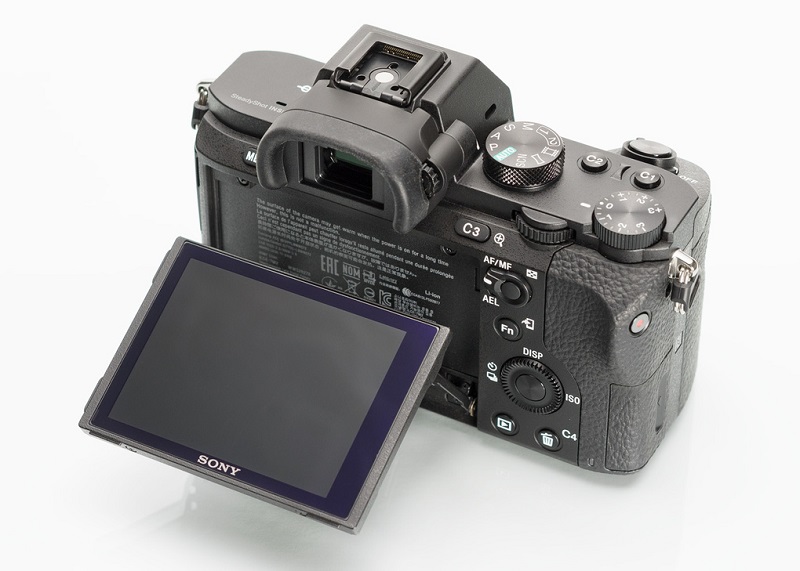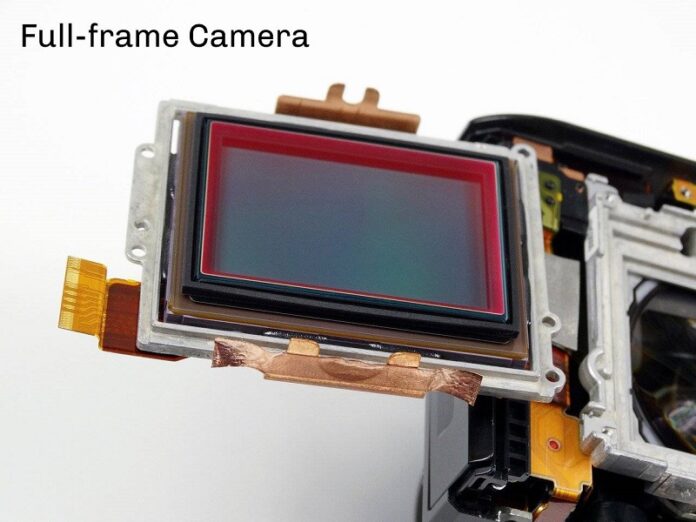Full-frame cameras have gained tremendous popularity in the global market. Everyone from professional photographers to ordinary people is eager to buy a full-frame camera. Tech goliaths like Canon and Nikon are also flooding the market with their new and latest full-frame cameras every year. Naturally, questions begin to arise in your mind. You start thinking what is causing this hype for full-frame cameras or what exactly is a full-frame camera? How does it differ from other cameras? Why has it become so popular? Through this article, we aim to answer a few of these questions that have been troubling you. Let’s get into it directly!
What do you mean by a full-frame camera?
A full-frame camera is one of the many types of camera that comes with a full-frame image sensor. The image sensor in a full-frame camera has a size that is very much similar to that of a classic 35mm film. It measures around 36mm x24mm. The sensors are nearly double the size of those found in popular DSLR cameras. The larger size of the image sensor enables more amount of light to be captured giving better image quality even in low-light conditions. This is why full-frame cameras are largely preferred by professional photographers.
What about the price of a full-frame camera?

To be honest the best full-frame cameras are really expensive. They are beyond the budget of even professional photographers and camera enthusiasts. However, as newer models of camera are introduced in the market continuously, the prices of the older ones see a steep fall. The advancements in the newer models are limited but worthy of the price hike. This doesn’t mean that the older ones become obsolete and perform poorly. Instead, remember the fact that though the older ones may be available now at cheap rates they were once the top-line models offered by their respective manufacturers.
Why should you consider buying a full-frame camera?
Yes, full-frame cameras are indeed a bit on the expensive side. So, what makes them desirable? Just like many other cameras, full-frame cameras come with their perks. These perks are what you pay every penny for. Let’s see a few of these perks that the full-frame cameras possess.
-
Better noise control and resolution
All the digital cameras in the market have an image sensor in them. The image sensor consists of millions of tiny pixels that make up an image. The number of these pixels, as well as their size, determines how good the quality of the final image will be. Suppose you have a 20MP image sensor on a full-frame as well as the cropped-sensor camera. Due to the larger size of the image sensor in the full-frame camera, the resulting pixel size will also be larger. How does it benefit us?
Larger pixels can trap more light rather than undesired noise. That’s why full-frame cameras provide better and also cleaner image quality as compared to cropped-sensor ones. If a cropped sensor camera can click images at the highest ISO setting of 12,800, a full-frame camera can extend this limit to ISO 25,600 and even beyond it. This is why full-frame cameras are suitable for low light photography. Besides this, an increase in the number of pixels and their size due to a larger image sensor provides better resolution. By resolution, we mean the ability of the camera to capture even the finest details.
-
Better dynamic range
Another benefit of having a large image sensor is that it provides us with a better dynamic range. The dynamic range is simply the ability of the image sensor to capture the darkest and the brightest detail in an image. Cameras with smaller image sensors have a fewer number of pixels. Smaller pixels saturate with light much quickly and it affects the quality of detail in the resulting image. Most of the fine detail will not be captured by the camera and hence, the image will be less crisp. A similar effect can be observed when it comes to capturing shadows. The small-sized pixels will capture more noise instead of available light.
As full-frame cameras are equipped with large image sensors they can capture the darkest and the brightest detail in great quality. In simple words, they have a better dynamic range and the images captured by them are more realistic.
-
Unaltered effective focal length
Cameras that are equipped with cropped sensors administer a crop effect to their lenses. These cameras make use of only a certain part of their lenses to produce the final image. Basically what they do is reduce the effective focal length that the one provided by the combination of the two. As a result, if you use a 50mm lens on these cameras, the images will appear as if they are captured using an 80mm lens. This is advantageous but in certain applications.
When you wish to record images of landscapes or architecture, this extra reach is a serious problem. When you use a 17-40mm lens with a full-frame camera, you’ll be able to capture images in the same wide-angle view as you would on a 35mm film SLR. This means that the effective focal length remains unchanged and you can capture the entire scene in your image.
-
Improved depth of field control
One major benefit of using a full-frame camera is that it provides great flexibility in terms of depth of field. It simply means that the out-of-focus areas will be automatically blurred out. It enables users to take images in portrait mode with a good focus on the subject rather than the background. The same can be applied to videos when you wish to focus on something, let’s say a bride in a wedding rather than the guests. You can also shift the subject of focus more easily with a full-frame camera rather than other cameras.
It is because of these factors that full-frame cameras are in great demand even though they cost more than other cameras.







